#flodden wall
Text
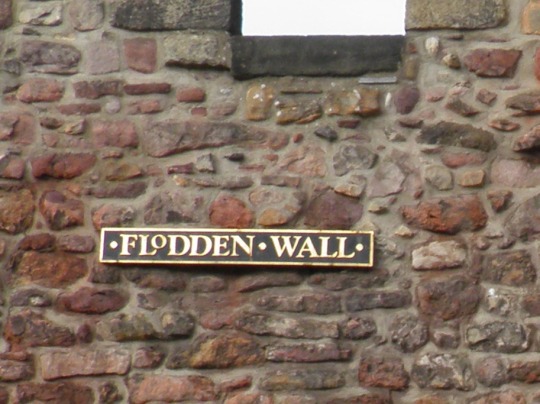
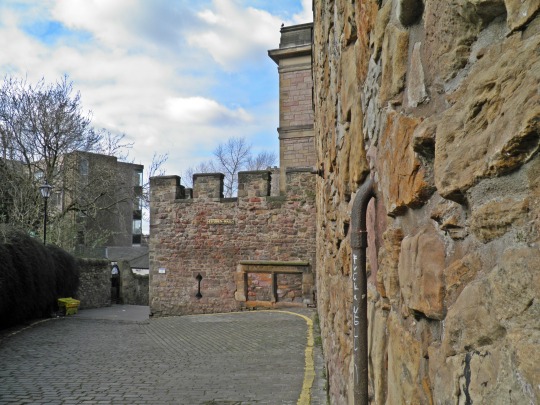
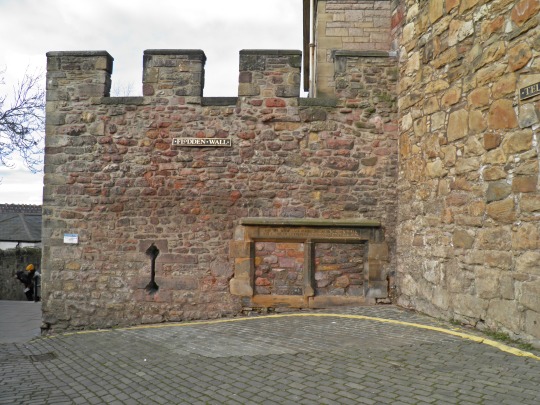
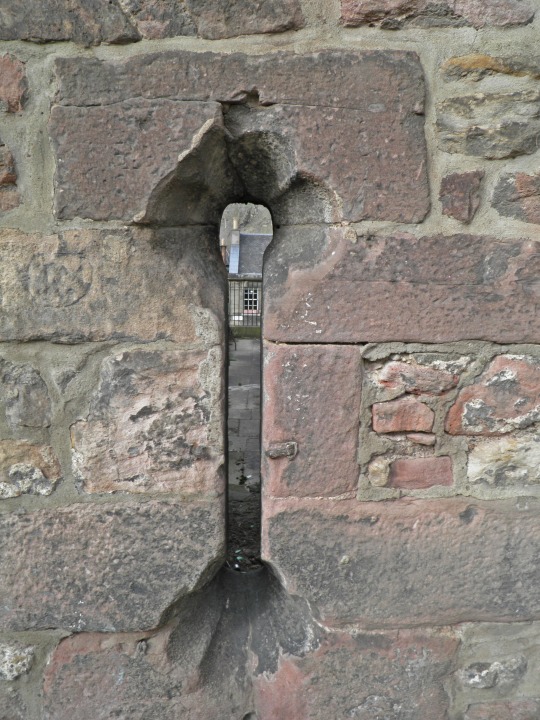

The Flodden Wall
This perhaps the most photographed part of the wall due to it's proximity to The Vennel, but the wall survives in other parts of the city, most notably in Greyfriars Kirkyard, there is also a large chunk of it remaining at Drummond Street next to The University of Edinburgh, Institute of Geography Building, it leads round the corner onto Pleasance to the buildings on the East of Cowgate. It originally enclosed the Blackfriar's Monastery.
Now Edinburgh was a walled city before The Battle of Flodden, where the wall gets its name. The first known city wall was erected circa 1450 and was called The King's Wall, it enclosed a small portion of the current city centre, running east from the Castle rock above the Grassmarket towards roughly where Blackfriars Street is today. The walls were primarily to the south and east, the Nor’ Loch – an artificial body of water to the north protected the city in that direction, it was drained to allow construction of North Bridge and later Princes Street Gardens. Remnants of the King’s Wall are thought to stand today in Tweeddale Court between the High Street and the Cowgate. There's an interesting wee building in Tweeddale Court that used to house sedan chairs, used by those that could afford them, to ferry folk around the tight closes of The Old Town.
Back to the Flodden Wall, it followed most of the area The Kings Wall did with additions, work started extending it in 1513 after the Battle of Flodden, it took some 47 years to complete and featured towers at strategic points along it.
This wee bit in my photies has gun loop, and a bricked up window, the latter and addition in 1876. As Edinburgh expanded, the King’s Wall became increasingly ineffective as many homes now lay outside of it. Areas such as the Cowgate, which at that time was a fashionable suburb of the town, were dangerously exposed and a new wall was required to replace the ageing and inadequate original structure.
Many historians dispute that The Flodden Wall was a defensive structure, claiming that the wall was never up to the task of defending the town against an invading army and was most likely constructed in order to better control trade and act as a deterrent to smugglers.
In the late 1700s, work commenced on removal of vast sections of Edinburgh’s ancient town walls which were now considered redundant. Very little survives now as a result - though most of the wall’s boundary can be easily traced. Archaeologists discovered remains of the Flodden Wall during a revamp of the Grassmarket in 2008. At the King’s Stables Road end of the Grassmarket, the line of the wall is now marked out in the paving stones.
The Netherbow Port, the main gate into Edinburgh was demolished in 1764 in order to improve traffic flow. If there is one structure I would like to see it is this one, if you get the chance go into Huntly House, The Museum of Edinburgh and check out the model of Edinburgh back then, alternatively Google Netherbow Port to check out depictions of it.
50 notes
·
View notes
Photo

0 notes
Text
A note for readers of Wildfell Weekly (as well as others): the book that Gilbert buys for Helen Graham, Marmion by Sir Walter Scott, appears to have been extremely popular in its time; it is mentioned by characters in several other famous novels of the 1800s.
St. John Rivers buys it for Jane in Jane Eyre:
“I have brought you a book for evening solace,” and he laid on the table a new publication—a poem: one of those genuine productions so often vouchsafed to the fortunate public of those days—the golden age of modern literature. Alas! the readers of our era are less favoured.”
…While I was eagerly glancing at the bright pages of “Marmion” (for “Marmion” it was)…
…I had closed my shutter, laid a mat to the door to prevent the snow from blowing in under it, trimmed my fire, and after sitting nearly an hour on the hearth listening to the muffled fury of the tempest, I lit a candle, took down “Marmion,” and beginning—
“Day set on Norham’s castled steep,
And Tweed’s fair river broad and deep,
And Cheviot’s mountains lone;
The massive towers, the donjon keep,
The flanking walls that round them sweep,
In yellow lustre shone”—
I soon forgot storm in music.
It is also mentioned by Mina in Dracula (though she, or Stoker, makes a small error - the scene mentioned involves characters from Whitby Abbey, but occurs in Lindisfarne, a tidal island that was also, long ago, the home of the illuminated Lindisfarne Gospels):
Right over the town is the ruin of Whitby Abbey, which was sacked by the Danes, and which is the scene of part of “Marmion,” where the girl was built up in the wall.
The book is a poetic epic set at the time of the Battle of Flodden Field (1513); I like the poetry a great deal, and the plot is nicely dramatic and Romantic, despite values dissonance (I do not find the title character as sympathetic as Scott does).
All this is to say - would people be interested in reading this story beloved by so many of our favourite characters? I could put it together as a Substack newsletter and email it out a little a day (probably for a few months total) starting in the new year. It’s not long (about 150 pages), it’s a good read with excellent poetic cadences and lots of high drama and imagery, and it gives a sense of what was popular among people who enjoyed the Gothic and Romantic.
#wildfell weekly#jane eyre#dracula#dracula daily#mina murray#the tenant of wildfell hall#marmion#sir walter scott
57 notes
·
View notes
Text
I've been AWARE of the lymond chronicles for...idk, forever? They were around the house when I was growing up bc my mum read them, and I'll occasionally see people on tumblr talking about the series and it seems like a good time?
I'm not sure audiobook is the best way to experience these books bc i've only just started but it's like...dense. I have enough familiarity with the historical period (in scotland in particular) that for the big picture stuff I'm like yeah cool, rough wooing, reformation rumbling along, gotcha, we all know about the flodden wall. But there's lots of little references that I feel it would enhance my enjoyment to understand, but I don't.
And of course there's so many fucking languages happening and I would definitely understand more of the random quotes in french, latin, german and (i think) spanish if i was seeing them written down instead of hearing some guy (David Monteath, I believe) say them.
Anyway so far we have our main character Lymond who is a Bad Boy (TM) and we're just in the process of meeting Will, and it would be clear he's going to be important even if I hadn't seen him mentioned in tumblr posts. He's here doing some sort of teenage rebellion thing? Lymond is bullying him in a vaguely flirty way which seems to be one of his main ways of interacting with people.
#hello here's some stream of consciousness liveblogging i guess? haven't done that in a while#not of interest to anyone who hasn't read these books and probably barely of interest to those who have#the lymond chronicles#books#m
11 notes
·
View notes
Text
Val-Cula Daily - Doki Doki Komuri Update

Last update in the Drac-log, checking in with the final plot threast of the last few days, the continuing adventures of Mina and Lucy-Chan.
Lucy arrives by train to Whitby, a seaside town in North Yorkshire. A common comment I see, and disagree with, is that the novel Dracula involves an "Old World" monster from the past entering a "new, modern world", Eastern superstition pushing into Western reason. Frankly, I find that reading to be lacking. As we saw in Jonathan's recipe-gathering travelogue, Eastern Europe is a vibrant place, just as connected to the modern world despite its remoteness and cultural distance. Likewise, in Mina's descriptions of Yorkshire, England has plenty of its own supernatural mysteries and centuries old history in play in Dracula.

The Larpool Viaduct was constructed in 1884, and would be a brand new example of Victorian engineering.
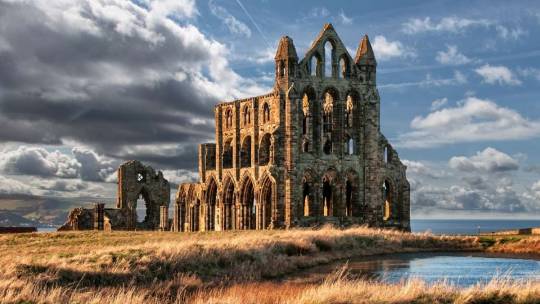
Whitby Abbey, described in the same paragraph, is a ruin for centuries by Stoker's time, having been built in 657 CE and confiscated by Henry VIII in 1538 CE. Like Dracula's Transylvania, drawing in contemporary law reviews and banking from all across Europe, England is a mix of the mundane and the supernatural in much the same way. Mina makes reference to a "White Lady" ghost who haunts ruins.
-------
Marmion, referenced as well, is a 1808 poem by Sir Walter Scott full of melodrama and intrigue. Per wikipedia, a summation:
The poem tells how Lord Marmion, a favourite of Henry VIII of England, lusts for Clara de Clare, a rich woman. He and his mistress, Constance De Beverley, forge a letter implicating Clare's fiancé, Sir Ralph De Wilton, in treason. Constance, a dishonest nun, hopes that her aid will restore her to favour with Marmion. When De Wilton loses the duel he claims in order to defend his honour against Marmion, he is obliged to go into exile. Clare retires to a convent rather than risk Marmion's attentions.
Constance's hopes of a reconciliation with Marmion are dashed when he abandons her; she ends up being walled up alive in the Lindisfarne convent for breaking her vows. She takes her revenge by giving the Abbess, who is one of her three judges, documents that prove De Wilton's innocence. De Wilton, having returned disguised as a pilgrim, follows Marmion to Edinburgh where he meets the Abbess, who gives him the exonerating documents. When Marmion's host, the Earl of Angus (Archibald Douglas) is shown the documents, he arms De Wilton and accepts him as a knight again. De Wilton's plans for revenge are overturned by the Battle of Flodden. Marmion dies on the battlefield, while De Wilton displays heroism, regains his honour, retrieves his lands, and marries Clare.
------
Mina meets a man in a pictureque graveyard overlooking the bay. An accent assumes. Stoker is a great writer and Dracula ages incredibly well and reads smoothly... until you meet his accents.
--------
Mina receives one of the letters, via Mr. Hawkin's, that Dracula sent out in place of Jonathan. Mina immediately questions its veracity, because Mina is the smartest character in the book and doesn't get enough credit for this. She's distracted, however, by Lucy's habit of sleep-walking.
2 notes
·
View notes
Text
Puck’s Song by Rudyard Kipling
See you the ferny ride that steals
Into the oak-woods far?
O that was whence they hewed the keels
That rolled to Trafalgar.
See you the dimpled track that runs
All hollow through the wheat?
O that was where they hauled the guns
That smote King Philip’s fleet!
Out of the Weald, the secret Weald,
Men sent in ancient years
The horse-shoes red at Flodden Field,
The arrows at Poitiers.
See you our little mill that clacks,
So busy by the brook?
She has ground her corn and paid her tax
Ever since Domesday Book.
See you our stilly woods of oak,
And the dread ditch beside?
O that was where the Saxons broke,
On the day that Harold died!
See you the windy levels spread
About the gates of Rye?
O that was where the Northmen fled,
When Alfred’s ships came by!
See you our pastures wide and lone,
Where the red oxen browse?
O there was a City thronged and known,
Ere London boasted a house!
And see you, after rain, the trace
Of mound and ditch and wall?
O that was a Legion’s camping-place,
When Caesar sailed from Gaul!
And see you marks that show and fade,
Like shadows on the Downs?
O they are the lines the Flint Men made,
To guard their wondrous towns!
Trackway and Camp and City lost,
Salt Marsh where now is corn;
Old Wars, old Peace, old Arts that cease,
And so was England born!
She is not any common Earth,
Water or Wood or Air,
But Merlin’s Isle of Gramarye,
Where you and I will fare.

youtube
#english poetry#poetry#rudyard kipling#england#english landscape#english history#english culture#English imagination#standing stones#avebury#Youtube
0 notes
Text
Greyfriars, Edinburgh Castle & Calton Hill - Edinburgh, Scotland
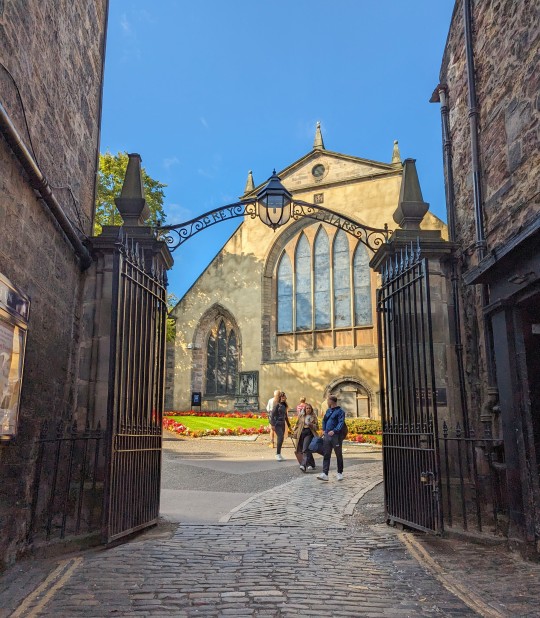
We started our day off with a visit to Greyfriars Kirkyard, where are number of notable Edinburgh residents have been interred since the late 16th century.

We weren't familiar with most of these names, are you?
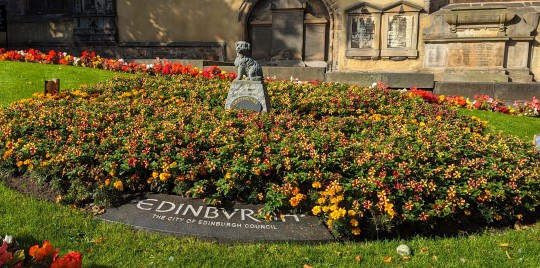
Memorial to Bobby, a Skye Terrier who was infamous for spending 14 years guarding the grave of his owner at Greyfriars.

We aren't big fans of visiting graveyards, so you aren't going to get a lot of photos of grave sites from me. However, the Flodden Walls (pictured above) are located along Greyfriars Kirkyard. The Flodden Walls were part of the city walls in the 16th century.
After visiting Greyfriars, we meandered toward Edinburgh Castle. The streets are beautiful here, especially in the area near the Royal Mile:
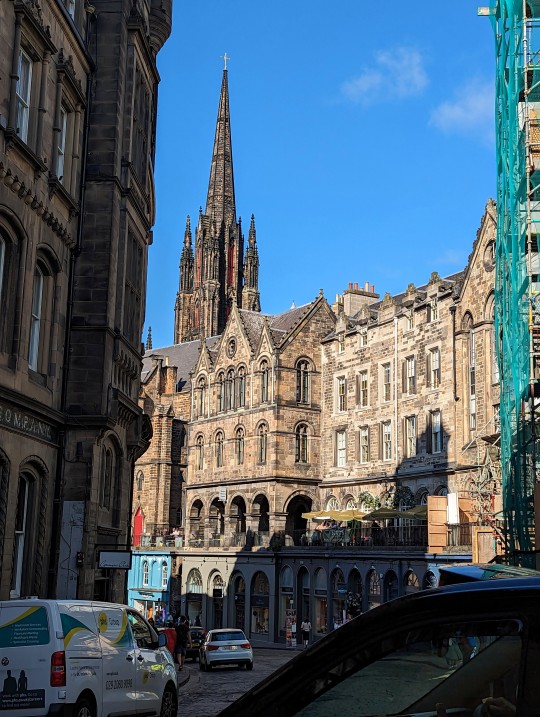
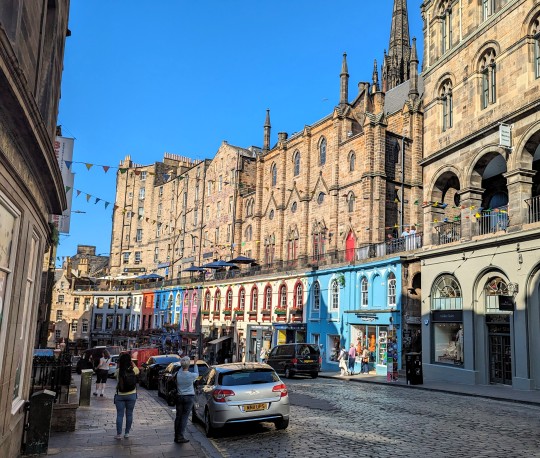
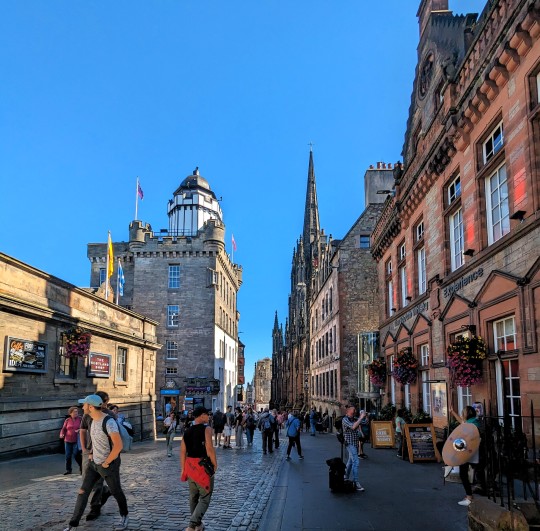
We had tickets for a 10:30 entrance into Edinburgh Castle, so we made our way to the queue and, surprisingly, had a minimal wait to get in. We enjoyed the magnificent views and checking out all of the historical displays, we did not see the Crown Jewels of Scotland (we weren't willing to stand in line for 30+ minutes to view them). Here are some of my favorite photos from our visit to the castle:




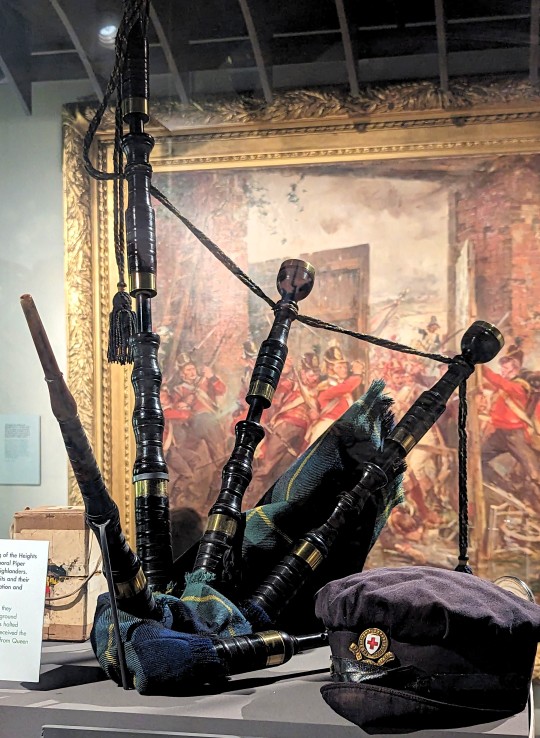
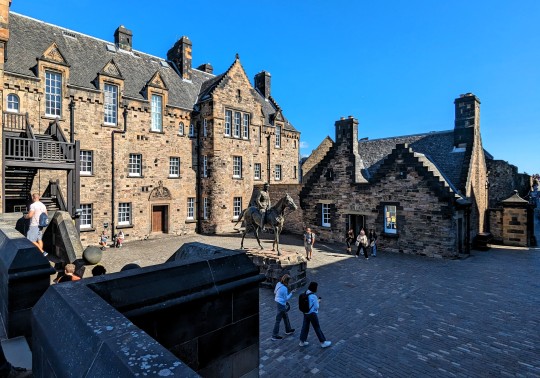

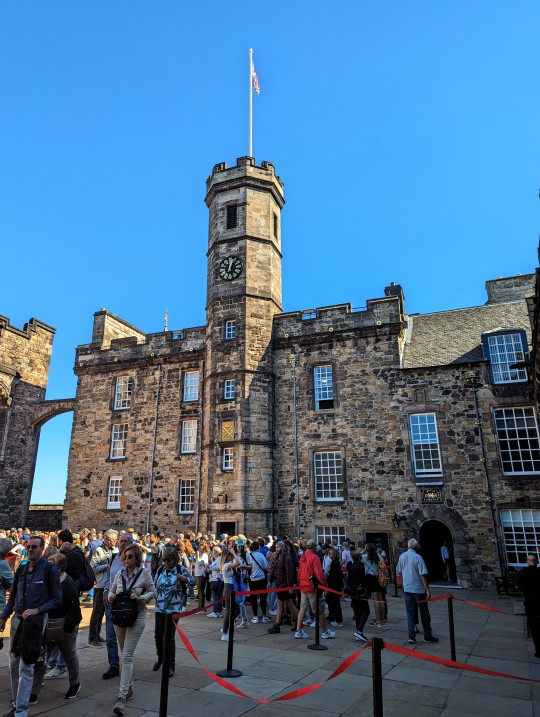
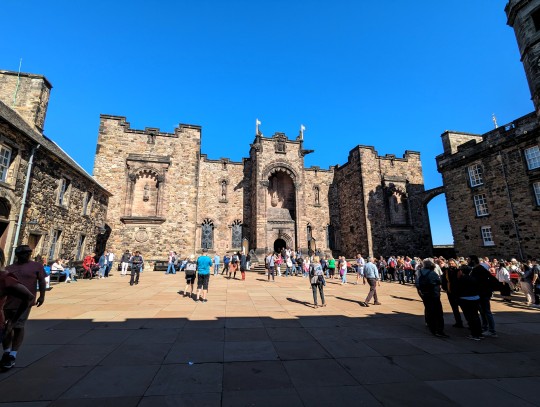
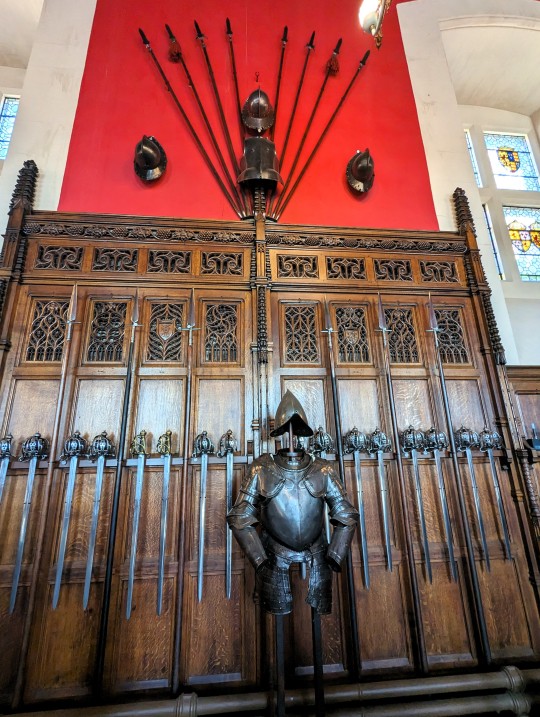

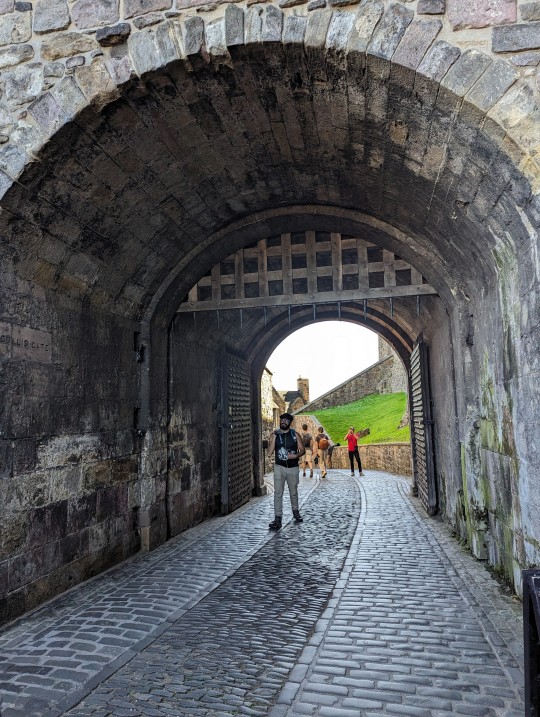
Lots of things to check out at the castle, plan to be there for a couple of hours (especially if you want to see the Crown Jewels). After getting our fill, we made our way out of the castle and went back toward Greyfriars to a pub that we had passed while visiting there.

A lovely and historic pub located on Candlemaker's Row in Edinburgh.
We spent the rest of the afternoon exploring Calton Hill area - great views and an unfinished national monument:

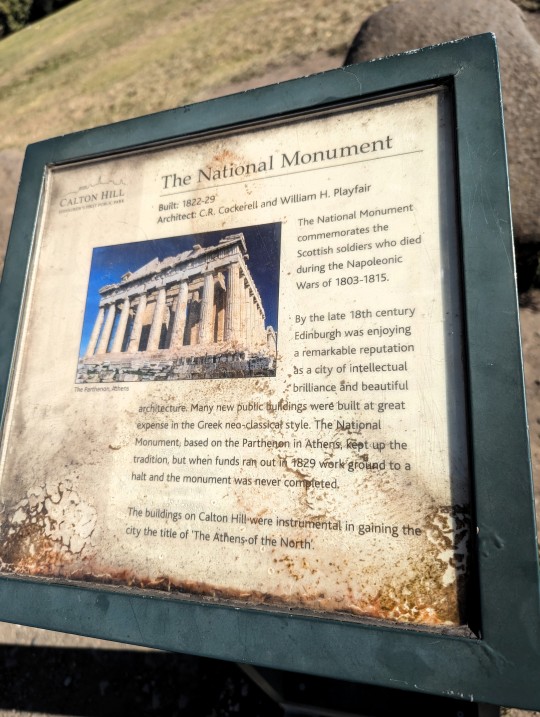
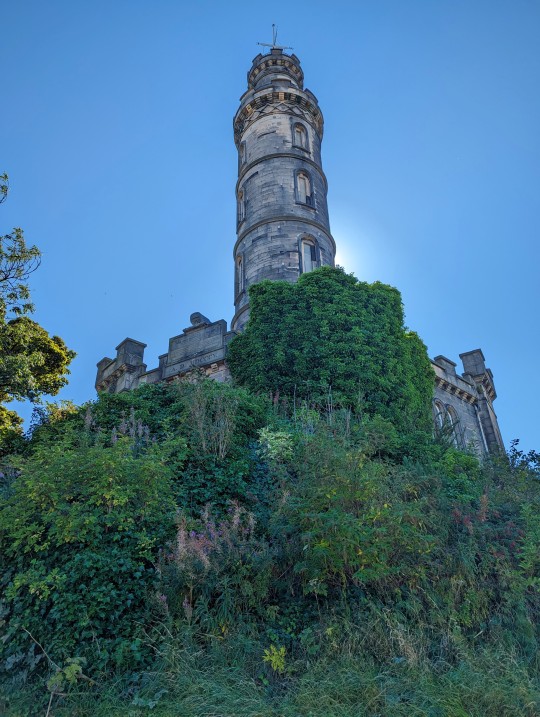
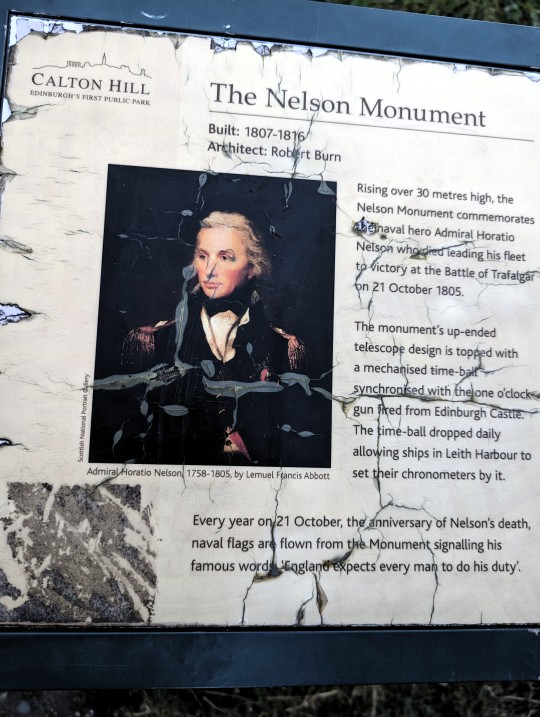
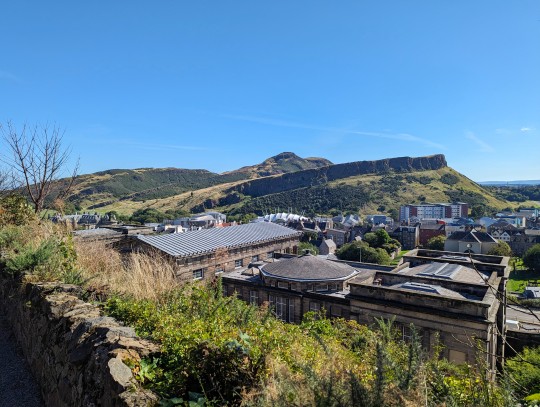


We found ourselves exhausted and in need of a cold beverage, so we wandered back toward Prince Street (the main road through Edinburgh's historic district) and found a sports bar (hoping to catch a bit of the US Open Tennis). We managed to be successful:

Today was our last day in Edinburgh. What an amazing place, I feel like we just touched a few of the many treasures that this city has to offer. One last photo - it shows a the blending of old and new, definitely the vibe of Edinburgh:
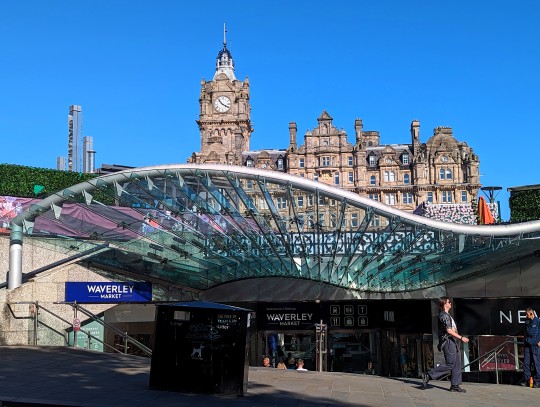
1 note
·
View note
Photo

Hello from the Vennel Viewpoint in Edinburgh, Scotland! This spot features a picturesque staircase that is rewarded with an amazing view of Edinburgh Castle. There are no cars allowed, but thank goodness Freyja is tiny so we could park here and enjoy the view for a bit. No, I did not wheelie up the stairs 😹 We came the back way from Flodden Wall 😺 Happy Monday! I can feel the days getting longer which means more daylight time ride! 😼💪🏍 #chasingcrystal #scotlandsites #edinburghcastle #edinburghcastleview #ladybiker #ladyriders #solofemaletraveler (at Edinburgh, Scotland) https://www.instagram.com/p/Cm64DusIlZa/?igshid=NGJjMDIxMWI=
#chasingcrystal#scotlandsites#edinburghcastle#edinburghcastleview#ladybiker#ladyriders#solofemaletraveler
0 notes
Text

The World's End, Royal Mile
The Worlds End's exterior walls was part of the Flodden Wall (a 16th century fort that protected Edinburghs historic old town). People of Edinburgh thought the world outside this wall was no longer theirs so hence the name.
1 note
·
View note
Text
Bridge 63, South Bridge, Edinburgh
Bear with me on this, it’s a bit complicated, especially if you are not familiar with the fine city of Edinburgh. The word “burgh”, usually now understood to mean town, originally meant fort, and that is what Edinburgh was. It provided a grand place for a fort, high on a precipitous ridge of rock, surrounded by other ridges, with water between them, so the only access to the castle for ages was a steep road along the top of the ridge, now the Royal Mile. So, easy to defend. Nevertheless, after the muddy defeat of the Scottish at Flodden Field, the Edinburgh residents felt nervous enough to build a wall around their town. This all made it very difficult to expand. The people who wanted to live in the growing town had nowhere to build their houses but the steep sides of the ridges. Because of the severe shortage of land for building, and possibly to see the amazing views, they built tall tenements. Eventually, even tough Scottish folks got fed up with trudging up and down the narrow paths between them, and then having to face several flights of stairs to the front door. So, bridges were needed to get from the top of one ridge to the top of the next, but all the space was full of tenement buildings, which were full of people. The only possibility was to build the bridges along the lines of paths between the tenements, at about the level of the third floor, leaving the lower floors in the arches of the bridge, and completely cut off from access to the outside, and daylight. Such as there is in Scotland.
South Bridge was designed by Robert Adam (see Bridge 43, Pulteney Bridge), a local lad, and in my view one of the best architects there has ever been (just take a look at Mellerstain House). He began work on the bridge in 1785, but of course because it is squashed between the tall buildings, you can’t see much of its magnificent 19 arches (the highest about 10 metres).

An arch over Cowgate, that you can see, also showing how the bridge disappears between the buildings on each side of Cowgate

And this is the bridge deck of south Bridge during the 2022 Festival
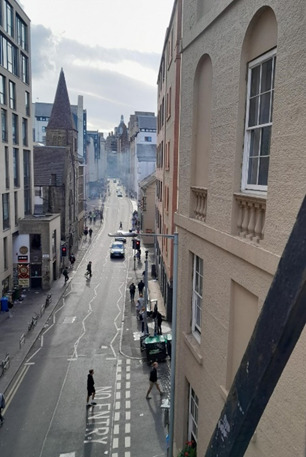
This is the view of Cowgate from the bridge, which give a bit of an impression of how high it is
The bridge was constructed along the line of the paths between buildings on Marlin’s Wynd, Peebles Wynd and Niddry’s Wynd (narrow pathways), and crossed the road at the bottom of the valley, Cowgate. Some buildings were demolished to make the bridge wide enough to be useful. I can find no information on what happened to the poor (extremely poor, and utterly powerless) people whose homes were destroyed by this, but we know the stones were re-used to build the bridge.
The interesting bit, of course, is the spaces that were enclosed. I think the original plan was to use these dark spaces as storage, so floors were built in the enclosed arches, and access was retained. I think it is really impossible now to find if there are any true bits in the stories that accumulated, but they are fun. To start, the plan was for city’s eldest resident – a judge’s wife – to be the first to cross the bridge in a triumphant and thrilling opening ceremony. The obvious flaw in the plan rather spoiled the atmosphere. The lady died a few days before the party. For some reason, the party planners had no plan B, and she crossed the bridge in her coffin (see coffin bridges, I might get to that). This had the effect of making living people a bit uncomfortable about using the bridge, and many preferred to continue to take the steep climb instead. This creepy start probably helped fuel further stories. There have been rumours of all kinds of nefarious uses for these places, as they would have made ideal places for activities that anyone wished to keep out of sight. They start with a craze for the rich to buy edgy fashion items such as hats and shoes, or meetings of the Hellfire Club, for rich men to indulge in drinking, gambling, dressing-up, illicit sex, political conspiracies and other generally disapproved behaviour. Much worse, it is suggested that greedy and uncaring landlords let rooms to the poor and desperate, that children with plague were locked up there to die, and that Burke and Hare hid their murder victims there, and took them though a secret passage to the anatomy department of the university.

One of the underground arches of the bridge
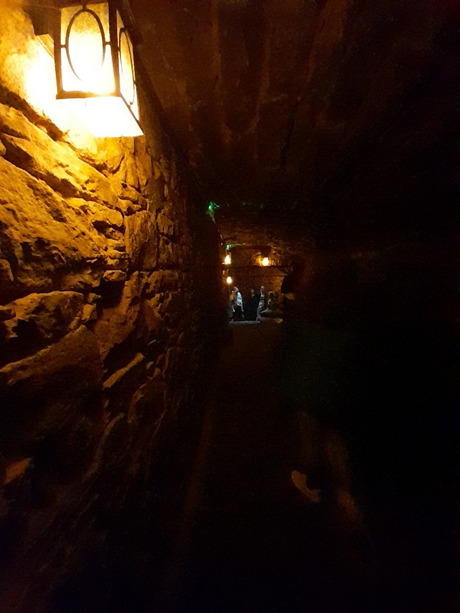
All of this was over in less than 50 years, as the Council recognised the spaces were dangerous, and blocked all the access points, and so it stayed until the 1980s, when the landlord of the Tron pub found a passage entrance in his basement, and began to dig. He excavated enough space for bands to rehearse and perform, and (apparently) for a defecting rugby player, Cristian Raducanu, to hide from the Romanian secret police. You can now take a tour.
0 notes
Photo


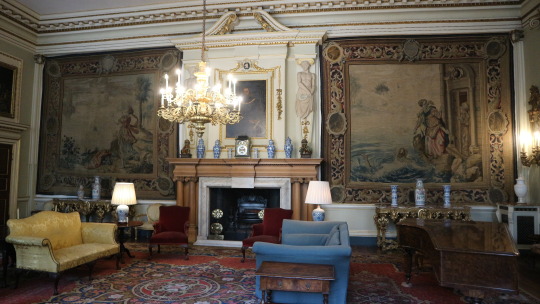
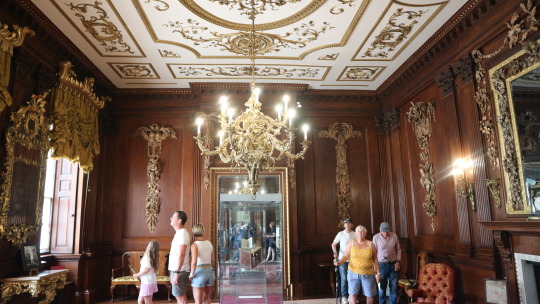

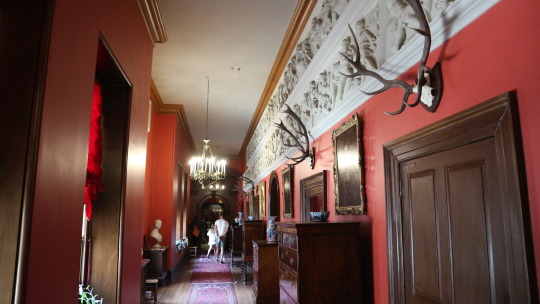
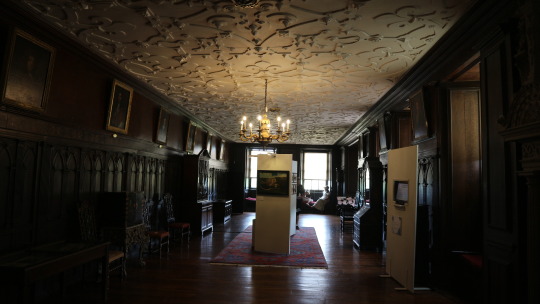

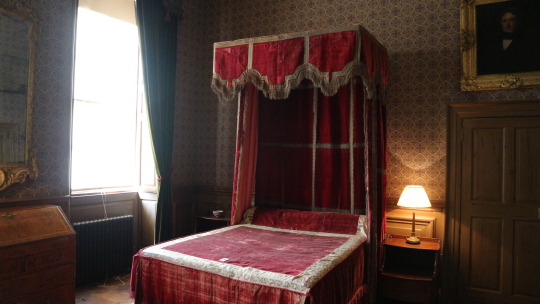
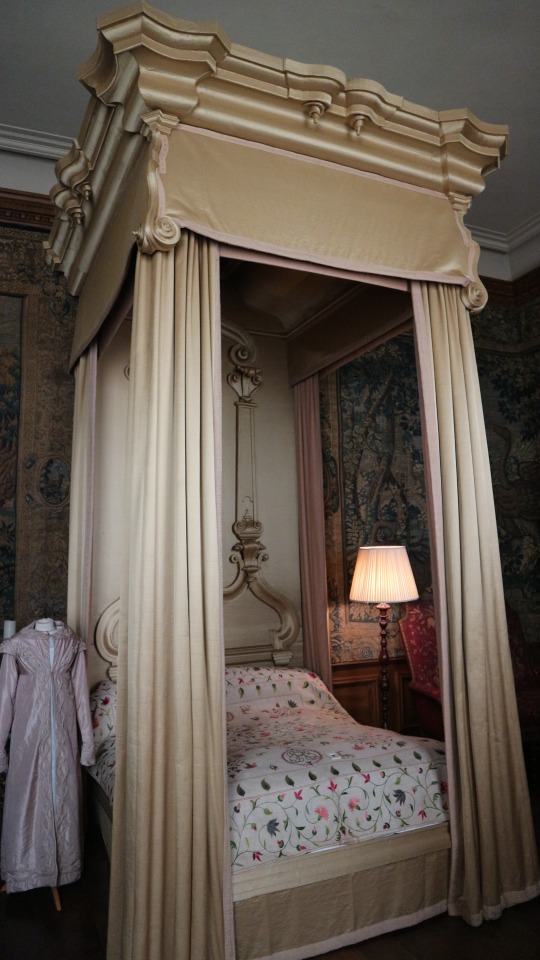
"It was the view painted on the drop curtain- the great house standing upon its high-buttressed walls, the bright parterre of the Italian garden outspread beneath; the white plume of the fountain in the centre for ever rising and falling, and the sound of it clear and distinct carried across the intervening valley on the still windless air”.
Phyllis Sandeman. (please see here and here for my outside photoshoots).
The history of Lyme Park dates back to the Battle of Crecy, 1346; after we defeated France in this battle, Sir Thomas Danvers was rewarded with these lands by Edward, the Black Prince, son of Edward III.
Although he died in 1376, before his father, and thus never became king, the Black Prince’s legacy lives on through his warring exploits and here. In 1398, Margaret, grandson of Sir Thomas, married Piers Legh, a Lancashire landowner, and the Legh dynasty was founded.
Leghs, like Sir Thomas Danyers, were always fighters; Piers fought at Azincourt (also against France, 69 years after Crecy!) and his heirs fought in the Wars of the Roses (they were Yorkists; please see here for more on those battles), at Flodden (against Scotland), and at sea (against Spain).
Things settled down somewhat and the first draft of the modern house was built in 1570, commissioned by Sir Piers Legh VII (himself a veteran of Scottish wars). Piers, though not afraid to fight, skilfully held his own throughout the battles between Catholics and Protestants which began after Henry VIII brought the Reformation to England in 1536; although remaining Catholic, the Leghs in his day and those of his heirs, kept on the right side of England’s Protestant rulers.
The next upheaval came in 1642, when Parliamentarians rebelled against King Charles I and started the British Civil Wars. Because Richard Legh was only eight years old at the time, he was not attacked by either side.
Although there was bloodshed throughout, the victorious Parliamentary leader Oliver Cromwell executing Charles and setting up his own dictatorship (1649-58), this did not scathe Lyme.
Richard Legh served as an MP under Oliver’s son and heir Richard Cromwell (1658-60) but, while covertly supporting Sir George Booth’s uprising against Richard Cromwell (George Booth was a fellow Cheshire aristocrat; please see his home at Dunham Massey) , he managed not to piss anyone off
After Richard Cromwell was overthrown in 1660, Richard Legh (who did not seem to have any solidarity with fellow Richards!) held office under Charles I’s son, Charles II, who became king in 1660. Oliver Cromwell’s corpse was dug up and hanged but Richard Cromwell, who kept his head down, lived in English country retirement until 1712.
Charles II reigned, mostly peacefully, for 25 years, but a crisis came when his Catholic brother, James II, became king in 1685. Although James could count on the staunch support of Peter Legh (1669-1744), he was unpopular for his faith, links to France, and the belief that he wanted to make himself an absolute monarch as his father, Charles I, had tried to.
James II was overthrown by his own daughter and son in law (not everyone valued family as much as the Leghs!) William and Mary, who became monarchs in 1689. James II was exiled to France and lived until 1701, but never wielded power in England. Lacking the canny instincts of his father, Richard Legh, Peter XII was twice imprisoned for being A Jacobite, loyal to the deposed James.
After getting out of prison, Peter XII gave up politics and lived quietly at Lyme as his father had done. The Jacobites, loyal to James II and his son, James Francis Edward Stuart, and grandson, Charles Edward Stuart, rebelled against the Hanoverian monarchs (heirs of William and Mary) in 1715 and 1745.
Peter Legh XII and his son, Peter Legh XIII (1708-92), though vaguely sympathetic, did not go out of their way to support the Jacobites and accepted that their plans failed. (I’m not sure when the Leghs lost their Catholic faith and became Anglicans, but unlike some other families they were not Catholics in the modern age). Giacomo Leoni, famed Venitian architecht, sculpted a new house of peace in the 1720s (see below).
The Leghs thus came to terms with the modern world and its industry, beginning in Peter Legh XIII’s very long life. They owned mines and much of the nearby town of Disley, so had sources of income as well as the farmland they owned.
Thomas Legh (1792-1857) great-nephew of Peter XIII, further diversified and welcomed the railway to Disley, a process which began in1852 and was done by 1864. As Disley became a suburb of Stockport and came in the orbit of Manchester, Thomas built a legacy for his nephew William John Legh (1828-98), a country gentleman who had other sources of wealth and thus held his own even as the aristocracy began to decline in a process charted by David Cannadine.
William John Legh, a Tory parliamentarianwho was called “a model country gentleman” by Benjamin Disraeli, was made 1st Baron Newton and presided over the heyday of Lyme, as did his son Thomas Woodhouse, 2nd Baron Newton (1857-1942).
Lyme was powered by a small army of servants; in 1910 there were 22 house servants and 102 gardeners and farm labourers. They toiled hard; Mary and Helen Rowlinson recalled that “it was like being in a big hotel at Christmas, father used to say. But it was more like a factory when it came down to brass tacks”.
Yet it wasn’t all work; the Leghs hosted balls at Christmas and New Year where they mixed in the entrance hall on equal terms with their tenants and employees, before leaving them to get on with the ball.
The paternalistic approach was, for a time, liked by employees who would be taken care of and knew their place. However, the forces Cannadine declared could not be held off forever and workers began to leave for factory jobs in nearby Stockport and Manchester. Although they would have to fend for themselves, often in direc conditions of which Robert Roberts wrote, many did prefer this to the even lower wages and quasi-feudalism of Lyme.
The trickle of servants turned to a flood after WW1 (in which Thomas Woodhouse’s son Richard William Davenport (1888-1960) fought)- 302 Disley men fought in the war, of whom 101 died) and WW2 (in which Richard William Davenport’s son Francis Michael (1919-84) fought) and here the old country life, which had been teetering for thirty or so years before 1914, collapsed.
Richard William Davenport gave Lyme to the National Trust in 1946 and lived to see his legacy safeguarded, as did his sister Phyllis, quoted above, who saw the life of her childhood disappear but also saw Lyme values still treasured at the time of her death in 1986, as they are today. (Please read Phyllis’ book Treasure on Earth about her aristocratic childhood at Lyme; it’s more interesting than my writing, anyway!)
Here are (1,2) the entrance hall, (3) drawing room, (4) the saloon- designed by Leoni, (5) the stairs , (6) the bright gallery, (7) long gallery- a full 120 feet long!, (8) the Edwardian bathroom, (9) state bedroom, (10) the yellow bedroom.
Although a wrench to Richard, his family’s loss was the nation’s gain and we know why (and taking pleasure in the National Trust carrying on their work), The Spectator magazine said in 1917, “every member of the family was rooted to the soil whence he had sprung. To the Leghs as they reveal themselves in their letters, Lyme was ‘dear Lyme, sweet Lyme’”
0 notes
Text
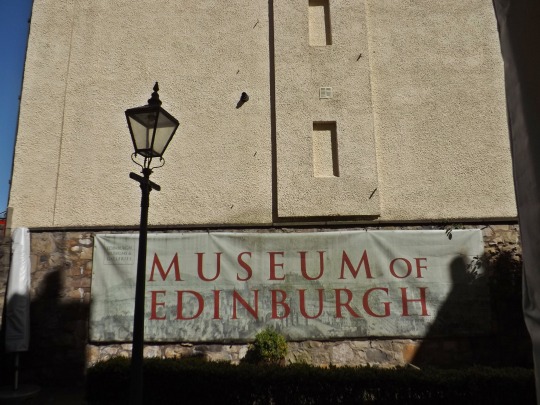
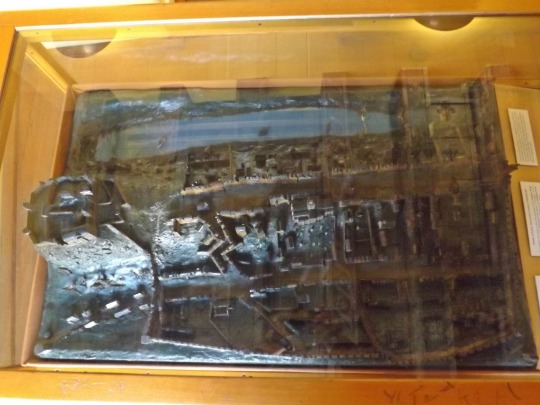

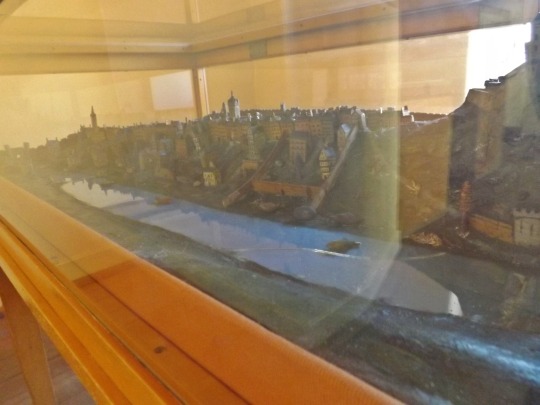
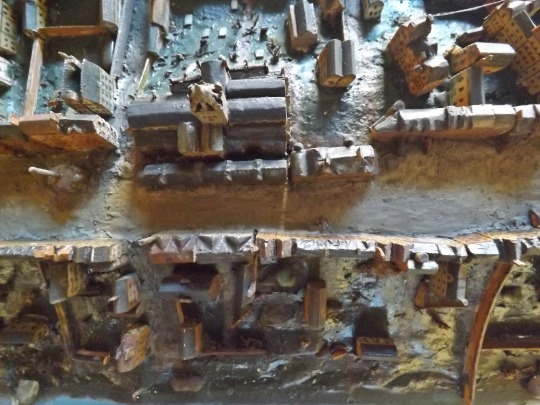

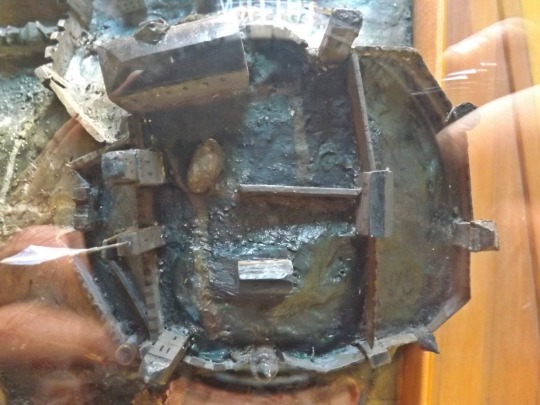
16th century Edinburgh in The Museum of Edinburgh.
I love this model of early 16th century Edinburgh.
Huntly House, where the museum of Edinburgh is dates back to this time, in 1517 it was separate properties on the site owned by a James Aitchison, by the end of the century it had been converted into one house, through the next 320 or so years it was extended and subdivided again, used for a variety of purposes until in 1924 the council bought the budling, it was lovingly restored between 1927'32, replicating the upper floors back to wat it would have looked like int was extended i1671 and converted into the Museum of Edinburgh. It was extended and upgraded at the end of the 1960's.
Back to the model, if you look at from the different angles, all you see is what was then Edinburgh in its entirety. ne one side, to the south the city was protected my the wall, erected after The Battle of Flodden in 1513, on the other side, to the north was a man made body of water called The Nor' Loch, offering protecting against any foes attacking from that direction.
By the 17th century, the loch was being used as a waste pit, a place to commit suicide and as a place to try witches and drown criminals.
In 1685, execution by drowning was outlawed in Scotland. Prior to this, the stagnant expanse of water received anything and everything the citizens of Edinburgh decided to throw into it including, household waste, waste from the slaughterhouses and raw sewage, as well as cadavers of many poor souls who had met there deaths there.
Luckily the water from the Loch was never used as drinking water, residents getting their water from The Wellhouse Tower.
The stench created by the detritus dumped into the Nor Loch gave rise to the upper classes pushing for its drainage by 1754. They would have a further ten years of suffering before the plug was pulled on one of the town’s most well known locations and the air in Auld Reekie would finally improve. The decision to drain the loch at the same time as building Edinburgh’s New Town is made
In 1787 The Town Council ordered complete drainage of The Nor Loch.
Between 1813 & 1820 Princes Street Gardens was developed in the hollow.
With nowhere to expand, the Old Town of Edinburgh had grown up and down instead of out. It’s Nor Loch hindering the city’s very growth. Edinburgh has grown since then into the city we know today.
23 notes
·
View notes
Photo
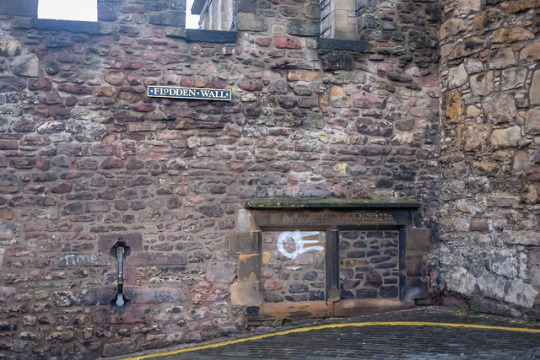
Vennel, EH3
#Vennel#Edinburgh#Flodden Wall#Scotland#United Kingdom#Photographers on Tumblr#Original Photographers
1 note
·
View note
Text

Greyfriars Kirkland, Edinburgh
1 note
·
View note
Photo

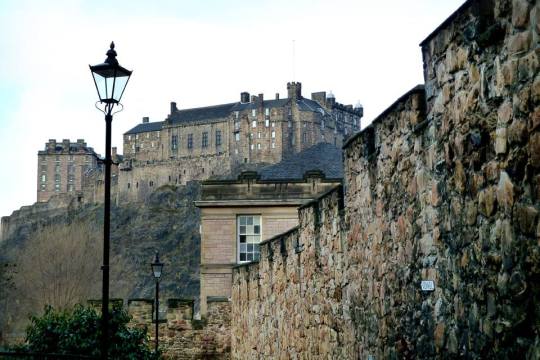


The disastrous Battle of Flodden was fought and lost in 1513, when an invading Scots army was defeated by the English at Flodden, in Northumberland. Fearing a retaliatory attack, Edinburgh’s town council resolved to strengthen the walls surrounding the city, some of which had stood since the 12th century.Completed in 1560, the Flodden Wall, 1.2 metres thick and up to 7.3 metres high, never faced an English invasion, but it did prove very useful for regulating trade and preventing smuggling, as it forced all traffic to enter the city via one of the six gates – the Netherbow, Bristo, Cowgate, Potterrow, West and New Ports.Initially encircling an area of just under 57 hectares, and a population of around 10,000, the Flodden Wall marked the city limits until the 18th Century, by which time the population had multiplied at least five-fold and was bursting at the seams.Though much was dismantled, three sections of the wall still survive: in Greyfriars Kirkyard, where it is embedded with tombstones; along the narrow Vennel leading to the Grassmarket; and running down Drummond Street to the Pleasance.
81 notes
·
View notes
Photo



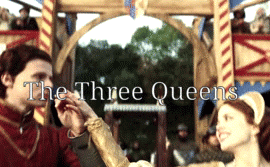

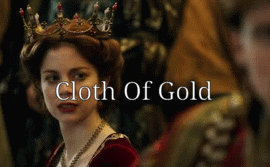


The Spanish Princess S2 rewrite
The wonky timeline and horrible inaccuracies of The Spanish Princess season 2 inspired me to plot out the season myself.
I made some minor timeline changes to make things flow easier, speeding up the time between events while ignoring Catherine’s first daughter born in 1510 and Mary’s 1518 French betrothal - but I can guarantee my version is 100% more accurate than Emma Frost’s ;)
I used the same following events in the series as rough reference points:
Birth and death of Prince Hal - episode 1
Battle of Flodden - episode 2
Princess Mary’s birth - episode 4
Field of the Cloth of Gold - episode 6
but I’ve dramatically altered the context, featuring a lot more festivities, the births of Margaret Douglas and Frances Brandon, and Henry VIII’s affair with Mary Boleyn!
EPISODE 1 - SIR LOYAL HEART (1511)
King Henry VIII and his new bride, Queen Catherine of Aragon, are crowned king and queen of England, to great rejoicing.
The new court is full of revels; Henry dresses up as Robin Hood to surprise his young queen, along with his band of merry men. An amused Catherine is declared his Maid Marian. The happy king and queen dance together, while Mary, Henry VIII’s sister dances with the king’s best friend Charles Brandon. After the revelry, Catherine confesses to her husband she is with child.
Henry writes to his father in law Ferdinand that he considers him his new father, and prefers an alliance with him rather than any other prince.
Catherine is sent a blessed girdle by her sister, Margaret queen of Scots, to guarantee a safe birth. She had been given it by Catherine previously to use in the birth of her son, prince James of Scotland, and hopes it gives her similar luck. Catherine is touched by the kind gesture.
On New Years day, Catherine gives birth to a prince, named Henry for his father.
Henry goes to a shrine, Our Lady at Walsingham, to give thanks while Catherine recovers. The king of France, Louis XII, is made godfather of little Prince Hal.
When Catherine is churched and returns to court there are jousts to celebrate England’s new heir. Henry jousts as “Sir Loyal Heart”. His sister Mary gives Charles Brandon her favour before the pair joust. Henry is victorious, but Charles admits privately to Mary after that he let the new father win. Catherine happily awards her husband the main prize.
A grand feast follows, where a jubilant Henry encourages the people to take the gold from his costume. A stampede follows, and the laughing king and queen must be helped to safety.
Their happiness is interrupted by the sad news that prince Hal is dead.
The court is plunged into grief, and Henry, in an effort to distract himself, declares war on France, wanting to win back the land lost to England. He asks a mourning Catherine’s help in convincing her father to fight with him. She agrees eagerly; God has taken her son, but he will surely bless them with another when they defeat their ancient enemy.
EPISODE 2 - FLODDEN (1513)
There has been several months of planning war against France, and Catherine is in the early stages of pregnancy. She talks to the Venetian ambassador about hiring Italian ships for an invasion, asking about the cost. Henry admires her attitude, and declares her regent of England while he is in France.
On the eve of her husband’s departure, Catherine tells him their child has quickened, leaving Henry even more eager to win for the sake of their son’s future inheritance.
Before they cross the channel to fight, Mary promises Charles Brandon to look after her brother. He reassures her they will both be fine; Mary says he’ll look after the king, and she the queen.
In France, Henry, Charles, and the other men wait on Catherine’s father, Ferdinand of Aragon. He never arrives, and Henry is incensed to discover he has been betrayed. He successfully lays siege to Therouanne, taking the town and demolishing the walls, creating large fires. They carry on, leaving destruction behind them.
Meanwhile in England, a now visibly pregnant Catherine heads the Privy Council meetings and realises they will have to fight the Scots, allied with the angry French. She writes constantly to the king’s almoner, Thomas Wolsey, worrying how her husband fares.
Catherine, helped by Mary, busies herself preparing essential items for battle, including sewing banners of the royal arms of England and Spain.
Margaret writes a letter pleading her sister not to attack, but Catherine burns it and rallies her soldiers with a rousing speech, saying “English courage excels that of all other nations!”. The soldiers proudly take her banners to battle at Flodden field, where they slaughter the Scots.
Catherine and Mary wait anxiously before England is declared victorious and Catherine is brought James IV of Scotland’s body. She wants to send his head to her husband, but her men persuade her not to. She sends her friar, Friar Langley, to Scotland to comfort the now widowed Margaret.
Across the sea Charles Brandon distinguishes himself by capturing a gatehouse at Tournai. Henry is sent James IV’s bloodstained clothes and a letter from Catherine informing him of her success. Inspired, Henry leads the successful assault on Tournai.
In England, celebrations continue for their victory, but are dimmed when Catherine goes into labour early and gives birth to a stillborn son. Mary comforts her, promising Henry will be home soon.
Henry returns from France victorious, creating Charles Brandon the Duke of Suffolk for his actions. He assures Catherine all will be well now the enemy is defeated, as his sister Mary is to be betrothed to Louis XII of France to make peace between the two countries.
EPISODE 3 - GRIEF (1514)
In Scotland, a grieving Margaret is comforted by Archibald Douglas after being declared regent on behalf of her son, the now king James. He can relate to losing a spouse, as his wife died not long ago.
In England, Catherine is pregnant again, and sews Henry’s battle torn shirts as Mary gets fitted for her wedding dress. Henry’s sister is horrified at having to marry the French king.
Wolsey is now the archbishop of York, and Catherine is beginning to resent his growing influence and power at court. Henry has come up with an idea to claim Castile on behalf of Catherine. He and Catherine argue viciously over it. She thinks it is ridiculous; even if she agreed to fight with her father over the land, Castile is her sister Joana’s before hers, as their mother’s heir. Henry says Joana is mad and incapable of ruling, and therefore it passes to her, and by extension, him.
Catherine is miserable, not helped by her bad pregnancy. She is constantly sick, but disguises her pain to say goodbye to Mary. At the waterside before her departure, Mary gets her brother to promise she can choose her second husband. Henry agrees, and Mary sets sail for France with several ladies in waiting, including Mary and Anne Boleyn.
In Scotland, a lonely Margaret finds herself falling in love with Archibald Douglas.
Catherine is torn between her husband and her father, even more so when Henry decide to send Charles Brandon over to France to discuss a new alliance with King Louis against him.
In France, Charles talks to Louis about an alliance against Ferdinand but the French king is reluctant.
Catherine goes into early labour and gives birth to a son they name Henry for his father. He dies minutes after birth in his parents arms, and both are devastated.
Charles Brandon informs Mary of the queen’s loss; both comfort each other before Charles reluctantly sails back to England.
In Scotland, Margaret secretly marries Archibald Douglas, breaking the terms of her regency.
Back in England, Charles tells Henry he tried his best but Louis refused. Henry reveals he has dropped his plans to get revenge on Ferdinand for the sake of the queen.
Henry tells Catherine he has realised there are more important things to focus on - like her, recovering. They cuddle in bed, brought back together in shared grief for their son.
EPISODE 4 - THE THREE QUEENS (1515 - 1516)
In Scotland, Margaret’s secret marriage is discovered when she becomes pregnant. Besieged and desperate for help, she sends a letter to her brother in England.
In France, Mary becomes a widow after King Louis dies. Henry sends Charles Brandon to bring her home, not before making him promise not to marry her. As she had with Margaret, Catherine sends her friar, Friar Langley, to comfort another Tudor widow; she has no need for him now as her prayers have been answered - she is with child again.
In France, Friar Langley tells Mary that the privy council, especially Wolsey, will never let her and Charles be wed. The pair marry anyway, helped by the new French king, Francis. Francis also gives his blessing for the Duke of Albany to take up the regency of King James in Scotland.
Henry is furious with both of his sisters, as Mary has married without his permission and Margaret urges him to send an army to help her. Henry refuses to send an army, but says Margaret can stay at his court.
Archibald urges Margaret to obey the council and surrender her son to a newly returned Albany, but she refuses. After a long argument, a defeated Margaret turns over James to Albany and flees with Archibald to her brothers court for the sake of her unborn child.
Mary reminds Henry “as you well know, I have always borne good mind towards my lord of Suffolk.” She beseeches him to “keep all the promises that you promised me when I took my leave of you by the waterside.”
Wolsey convinces Henry to allow Mary and Charles to return home to England if they pay a fine. To sweeten her brother’s disposition, Mary steals a large French jewel, the Mirror of Naples, for him.
On the Scottish borders, Archibald refuses to cross into England with Margaret and reveals he intends to make peace with Albany. A betrayed Margaret carries on to London without her husband.
Mary and Charles return home to England, but her lady Anne Boleyn decides to stay on with the new French queen.
All 3 Tudor queens, Catherine, Mary, and Margaret, are now back together in the English royal court, and pregnant.
Margaret has still not forgiven Catherine for the role she played in her first husband’s death. She asks for her blessed girdle back, and Catherine agrees.
Shortly after, Margaret gives birth to a daughter, also named Margaret. Catherine visits her and apologizes for the hurt she has caused. She gives her new dresses and jewels that befit the queen regent of Scotland, and Margaret thaws.
Catherine tries to reconcile the three Tudor siblings, saying their children will all be cousins and it would be a shame to make them enemies as they will be the future royal family.
Henry forgives his sisters; he delights in wearing the Mirror of Naples Mary has stolen from King Francis, and tells Margaret Archibald’s actions were “Done like a Scot”.
Grand jousts are put on to celebrate Mary and Margaret’s return to court. Catherine and Mary watch on proudly as their husbands compete against each other, while Margaret is cheered by a letter arriving from her husband, saying he is trying to negotiate with Albany.
Catherine successfully gives birth to a little girl, named Mary in honour of her aunt. Wolsey, now a Cardinal, is made her godfather, while Margaret Pole is made her godmother and governess. A delighted Henry assures the Venetian ambassador “We are both young; if it was a daughter this time, by the grace of God the sons will follow.”
EPISODE 5 - MAY DAY (1517 - 1518)
Henry and Catherine are head over heels with their surviving child, now a thriving toddler. Mary is constantly flaunted by her parents to ambassadors and courtiers who dote on her; the king names her his pearl of the world, and brags she never cries. The royals are informed of attacks on foreigners in London, but caught up in their happiness, they brush off the news.
The three queens meet at Margaret’s London townhouse, with their children, Princess Mary, Margaret Douglas and Henry Brandon. Mary is pregnant again, while Margaret is eager to return to Scotland as the people around her household are becoming increasingly hostile towards her.
On May Day there are large scale riots in the city, and royal officers including Charles Brandon are sent to suppress them. Three hundred rebels are rounded up and sent to the king and queen. An emotional Catherine, Margaret and Mary beg for Henry to have mercy on them for the sakes of their wives and children, which is given.
Margaret leaves with her daughter to reunite with her husband in Scotland. Mary and an increasingly devout Catherine accompany her northwards while on pilgrimage to visit the Our Lady shrine at Walsingham, the same place her husband visited in thanks after she gave birth to their short lived son. Catherine suspects she is pregnant again.
While his wife is away, Henry entertains his daughter, and writes a Defence of the Seven Sacraments with Thomas More. Increasingly bored as the months pass, he begins an affair with one of Catherine’s ladies, Bessie Blount.
On her return to court, Catherine tells Henry his sister has given birth to a healthy girl named Frances in honour of the French king, and surprises Henry with her own big belly, obviously with child. He orders Te Deum to be sung in the churches in celebration.
In her absence, Henry has grown a beard as part of a peace pact with Francis, but Catherine dislikes it and asks him to shave. He agrees happily after her surprise.
Unfortunately, their joy is as short lived as their child; Catherine soon gives birth to a daughter who dies not long after.
EPISODE 6 - CLOTH OF GOLD (1519 - 1520)
Catherine and Henry take comfort in Mary and the new title, “Defender of the Faith”, that Henry has been given by the Pope. Catherine is teaching her daughter Latin, and all is well until it is discovered that Bessie Blount is pregnant. She is sent away from court to a nearby priory to avoid the scandal being discovered.
Back in Scotland, Margaret discovers her husband Archibald has been living openly in her house with a mistress.
Cardinal Wolsey devises a royal summit with the French king, the Field of the Cloth of Gold, to cement their peace treaty. Henry is eager to see his rival, King Francis, in the flesh.
Bessie has given birth to a bastard son, Henry, who Henry immediately recognises as his own and gives the surname Fitzroy. He makes Wolsey his son’s godfather, and sends him to a secret christening. Henry promises Catherine Fitzroy will be kept away from court, but he will do his fatherly duty. He sends some of Princess Mary’s ladies to care for him.
Margaret writes to her brother she wants a divorce. Catherine sympathises with her sister as she is in a similar position, but urges Margaret to commit more fully to her husband, as she is. Henry and Catherine are determined to put the Fitzroy argument behind them and spend time with Princess Mary as a loving royal family.
Margaret discovers the Duke of Albany has been invited to the Field of the Cloth of Gold, and urges him to convince her brother to help her.
Henry, Catherine, Henry’s sister Mary and Charles Brandon attend the Field of the Cloth of Gold in France. In their absence, England is ruled by Princess Mary, Margaret Pole and the Privy Council.
At the Field of the Cloth of Gold, the Duke of Albany talks to Henry; again Henry and Catherine refuse to support his sister in a divorce. Margaret needs to work out her differences with her husband, for the sake of their daughter.
Catherine and Queen Claude of France become friends, bonding over their husband’s rivalry and their ladies in waiting becoming mistresses. Catherine is grateful Henry is discreet with his lovers, unlike Francis with Francoise de Foix, and that in England there is no official recognised royal mistress position.
King Francis proposes a match between his son and Princess Mary; Henry agrees to allow some French ambassadors to visit England.
In England, the French ambassadors meet with Mary. Mary, watched over by Margaret Pole, entertains them by playing the virginals and offering them strawberries, her favourite.
In France, the kings hear the ambassadors are enchanted with the princess. Catherine is secretly displeased, as she favours her nephew, the Holy Roman Emperor Charles V, as Mary’s future husband. She says her daughter is far too young to marry, and the four royals agree they will wait until Mary is older for the pair to wed.
At the festivities, Catherine’s lady Mary Boleyn reunites with her sister Anne, who returns with them back to England as one of Catherine’s ladies.
EPISODE 7 - THE KING’S PEARL (1522 - 1523)
Catherine concentrates more on her daughter’s future. Hearing of his talents, she meets the great scholar Juan Luis Vives and commissions him to write a book on female education for Princess Mary.
A desperate Margaret writes that her marriage to Archibald is invalid as James IV is still alive. Catherine is incredulous; she had seen the Scottish king’s dead body herself. Catherine and Henry again refuse to support her.
After an annoyed Henry tells Edward Stafford off for failing to keep the Welsh in line, Catherine persuades Henry that an Imperial marriage would be better for England and their daughter.
Charles V visits England, where a grand pageant is performed in his honour. Henry’s sister Mary plays Beauty, while Mary Boleyn is Kindness and Anne Boleyn Perseverance. Afterwards, Anne flirts with a courtier, Henry Percy; she says she likes his beard.
In the midst of the festivities Edward Stafford, still annoyed over being rebuked by the king, makes a snide remark overheard by Wolsey.
Princess Mary, wearing a Valentines brooch for her cousin, meets Charles V. Catherine says he cannot leave without seeing Mary dance. Mary does not need to be asked twice; Catherine watches her daughter proudly as she impresses the emperor.
In Scotland, Margaret commands Albany to appeal directly to the Pope for a divorce, as Archibald has turned her mad. He agrees to help her. Margaret and Albany finally come to an agreement over the regency of James, which is confirmed by the Scottish parliament. Margaret is not regent, but is able to help her son govern.
Princess Mary is formally betrothed to Charles V, but after he leaves England Charles breaks the treaty and marries Isabella of Portugal. This infuriates Henry, who takes his anger out on Catherine. They have a blazing argument, where he blames her not only for her nephew jilting their daughter, but for not bearing a male heir. Edward Stafford has been listening to prophecies that predict his death and intends to kill him himself after their argument; England is not safe if he were to die without a successor. Catherine argues they have an heir; her mother ruled as a queen in her own right, and she herself ruled the country for him when he was in France.
Juan Luis Vives presents his finished book to Catherine. She tells him “If I had to choose between extreme sorrow and extreme well-being, I think I would prefer the former to the latter, for people in disgrace need only some consolation, while those who are too successful frequently lose their minds.”
She is comforted by Vives’ assurance that she is a good queen and mother, and a model for all woman. Henry meanwhile, is comforted by Mary Boleyn while Edward Stafford is executed for treason.
EPISODE 8 - DECLARE, I DARE NOT (1525 - 1527)
Archibald approaches the Scottish parliament heavily armed, but Margaret orders cannons to be fired at him. Henry Stewart, the master of artillery, is eager to obey, but the English ambassadors are appalled at their actions. They tell her not to attack her husband, but Margaret replies they should “go home and not meddle in Scottish matters”.
In a ceremony, Catherine watches on as her husband announces Princess Mary will go to the Welsh Marches with Margaret Pole and her own council to learn how to govern. It appears Henry has changed his mind and is prepared to accept his daughter as the first ruling queen of England; Catherine is delighted, especially when Mary is given the executed Stafford’s lands and the lordships of Bromfield, Chirkland and Yale to support her new role.
In the same ceremony, a proud Mary and Charles Brandon look on with their daughter Frances as their son Henry is made earl of Lincoln. Shortly after Henry Fitzroy is made Duke of Richmond and Somerset. Catherine is furious, especially when Henry declares his bastard and household will go to the northern borders to defend England against the Scots.
Mary Boleyn gives birth to a girl, Catherine Carey, named in honour of the queen. Catherine says the child looks just like her father.
Henry and Wolsey press ahead with arranging a marriage treaty with France as discussed at the Field of the Cloth of Gold; Catherine, desperately wanting to make amends with her husband, reluctantly agrees.
Wolsey tells Henry Percy and Anne Boleyn off for getting betrothed without approval from the king. She is only a knight’s daughter, and beneath Percy’s rank; he is sent from court to marry Mary Talbot.
An ambassador for the French marriage, Bishop Tarbes, arrives to see Princess Mary. Tarbes questions Henry and Catherine about their daughters legitimacy. Catherine brushes off Tarbes’ concerns, as the Pope had given her and Henry a dispensation to marry even if her marriage to Arthur had been consummated.
Henry visits Mary Boleyn and congratulates her, wondering if her daughter is his. While looking after her sister, Anne talks with Henry; sparks fly.
Margaret is relieved to hear the Pope has finally sanctioned a divorce from Archibald. Though she acknowledges she will have to let Archibald attend Parliament, she is free to marry again should she choose. She drinks to her success with Henry Stewart, acknowledging he is quite handsome…
Henry has grown his beard out again, but this time refuses to shave when Catherine reminds him she hates beards. He insinuates to Anne Boleyn she could be his mistress, but she refuses after seeing how he’s treated her sister.
Princess Mary is formally betrothed to the French king’s son and there is a joust to celebrate. Henry competes with the motto “Declare, I Dare Not”, in stark contrast to Sir Loyal Heart in episode 1, and Catherine is confused.
With the celebrations over, an emotional Henry and Catherine must say goodbye to their daughter. Together they watch on as Mary, helped by Margaret Pole, prepares to leave court for her own estates in the Welsh Marches. As he holds his wife, Henry’s gaze cannot help but drift to a smiling Anne Boleyn nearby…
Embracing her daughter, Catherine gives Vives’ book to Mary as a farewell present. She promises her she will one day be queen of France - and England.
In a flash forward years later, Henry and Catherine’s daughter Mary is crowned the first queen regnant of England, to great rejoicing.
The last episode basically comes full circle to the first, with several parallels:
France are enemies/friends
Henry jousts for Catherine/Anne
Catherine loses Prince Hal/Princess Mary
Henry and Catherine are crowned/Mary is crowned
and we all know how the future will be, with a queen replaced because she can’t produce a male heir…
#let me know what you think!#the spanish princess#i know i focused more on the tudor's and not lina/oviedo#but just imagine them living their best life watching all the craziness unfold#i was going to have her be the lady henry dismisses in anger after catherine hating fitzroy becoming a duke but thought that was too mean!#they deserve their happy ending and catherine deserves a friend :)
161 notes
·
View notes